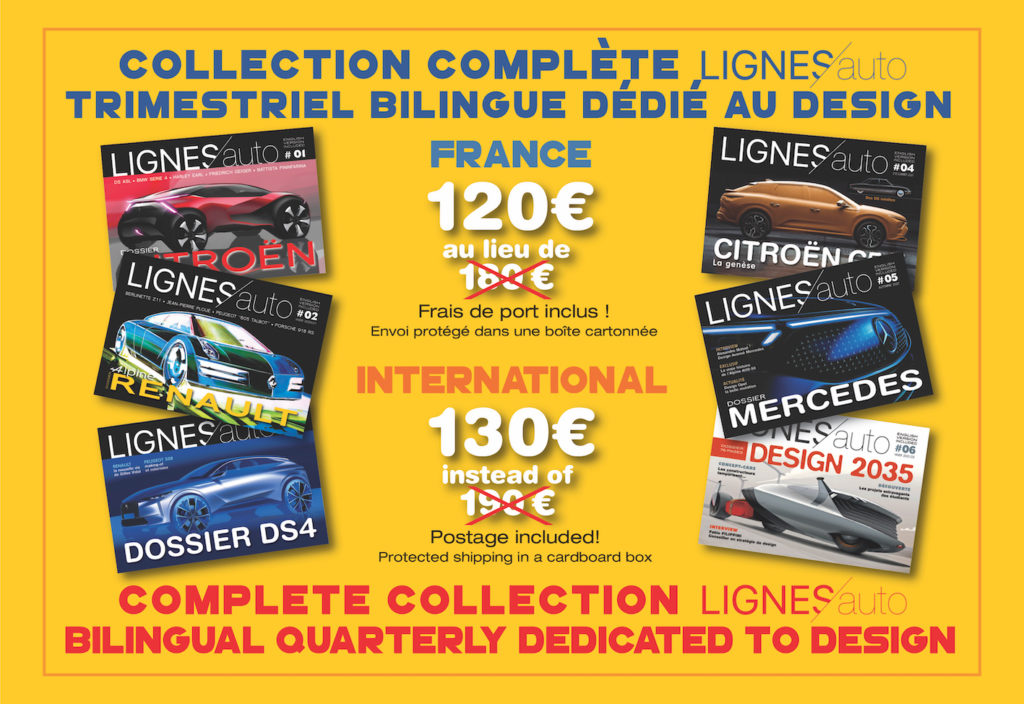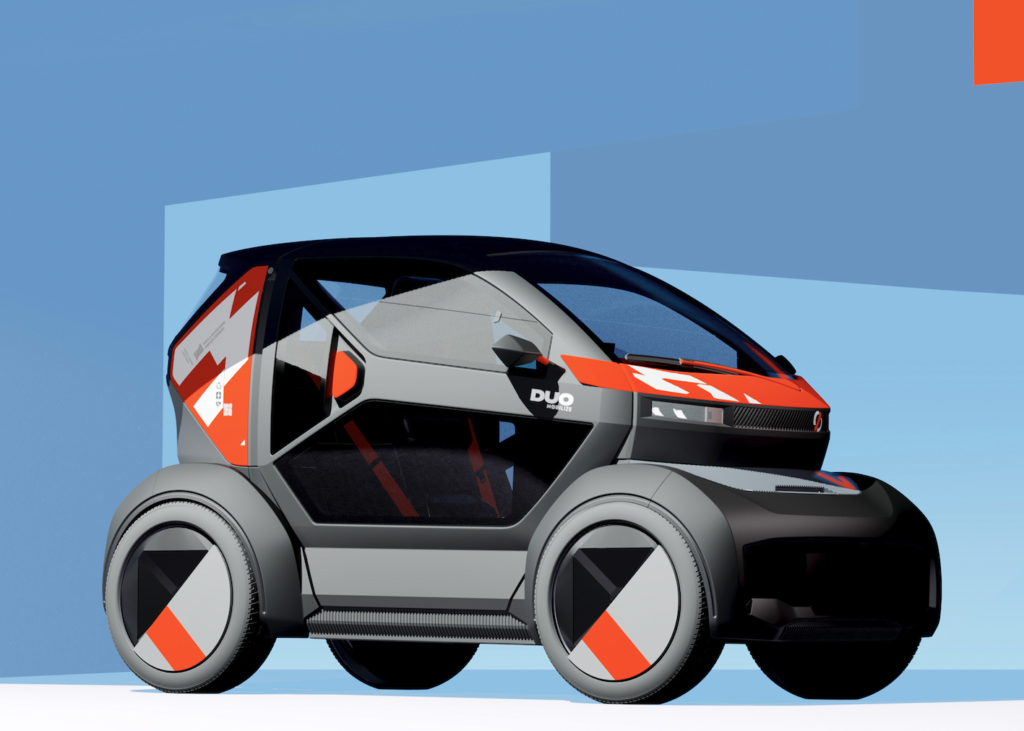
The development of individual mobility for urban travel affects both individuals and, of course, craftsmen and companies. In these new proposals, the tubular chassis quadricycle accessible from the age of 14 in France is currently the preserve of Citroën with its Ami.

The Renault group is going on the attack with its Mobilize* brand and will be offering the ultimate competitor to the Ami for hire at the end of 2023: the DUO. This small vehicle, which is also based on a tubular chassis, seems at first glance to have a better finish than the Citroën Ami. It has an airbag, including the light quadricycle version, which is limited to 45 km/h and is accessible to teenagers aged 14 and over. The DUO is also available in a “heavy” quadricycle version which requires a driving licence and whose performance can reach 80 km/h.
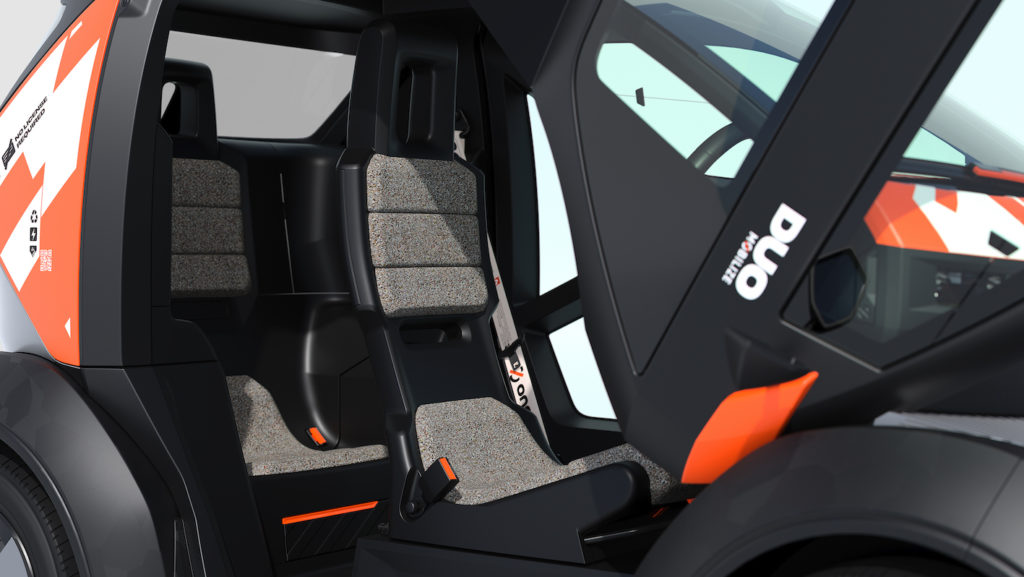
The Mobilize vehicle opts for a two-seater tandem architecture, like the Twizy, but unlike the Twizy, DUO has doors that open like a Lamborghini Countach. The idea is to give the small vehicle a more constrained width, but in the end it is only 6 cm less than the Ami (1.30 m compared to 1.36 m).
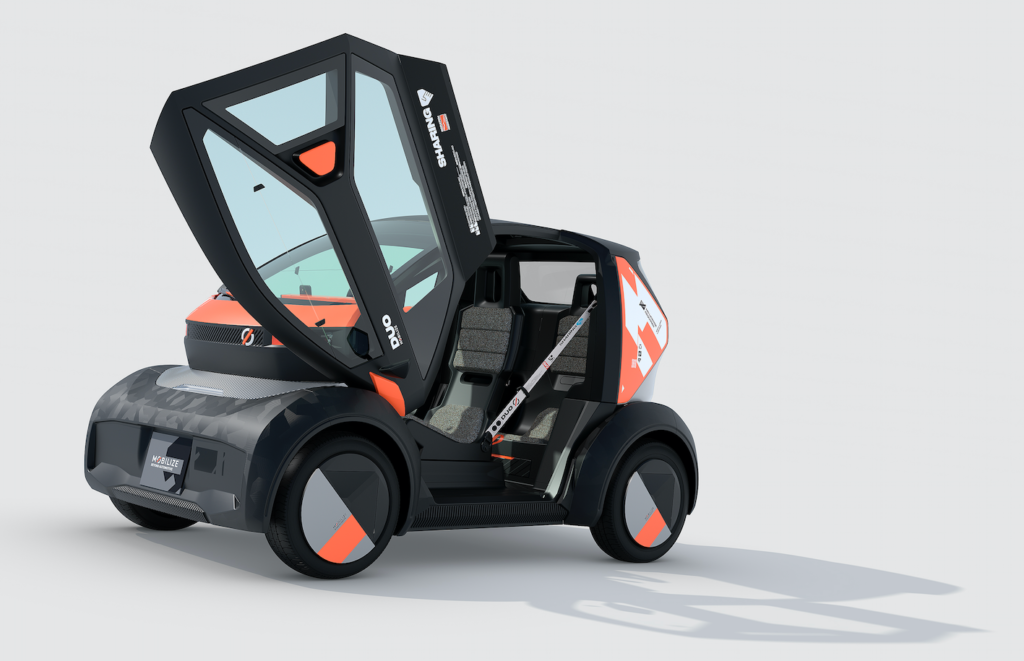
The door opening kinematics are not a nod to the Countach’s designer (Marcello Gandini) but were chosen to allow the two passengers to exit easily between parked cars. “This architecture is also safer for pedestrians and cyclists, as it does not cause any overflow onto the road or pavements,” says the manufacturer.
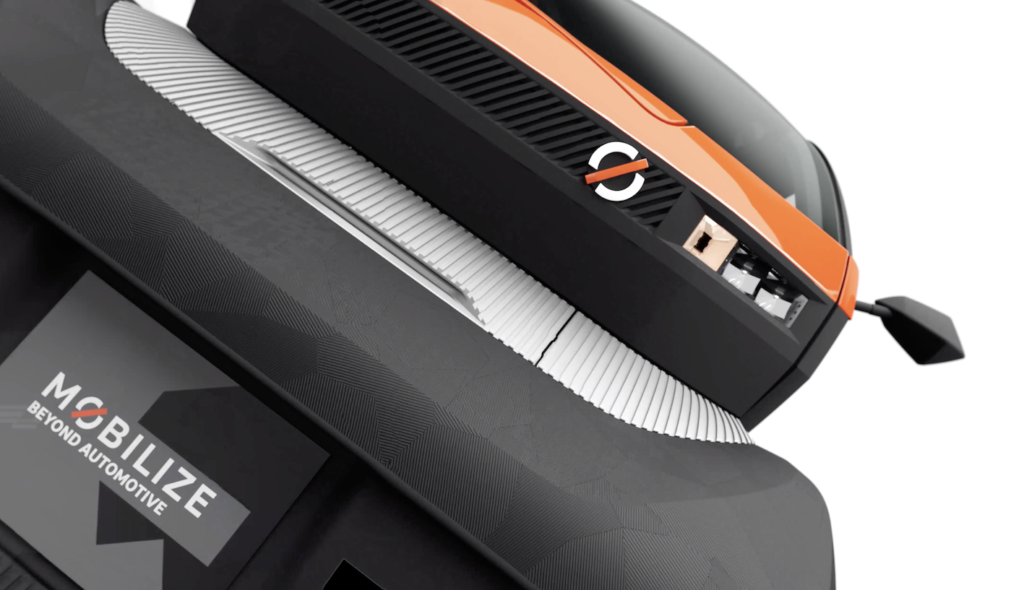
Unlike the Citroën (purchase, rental, subscription), the DUO will only be available for rental and subscription. This will be the case from the end of 2023. For private customers of the Duo, Mobilize will offer flexible subscriptions starting from a 3-month rental period. The monthly payments can be adjusted according to the rental period.
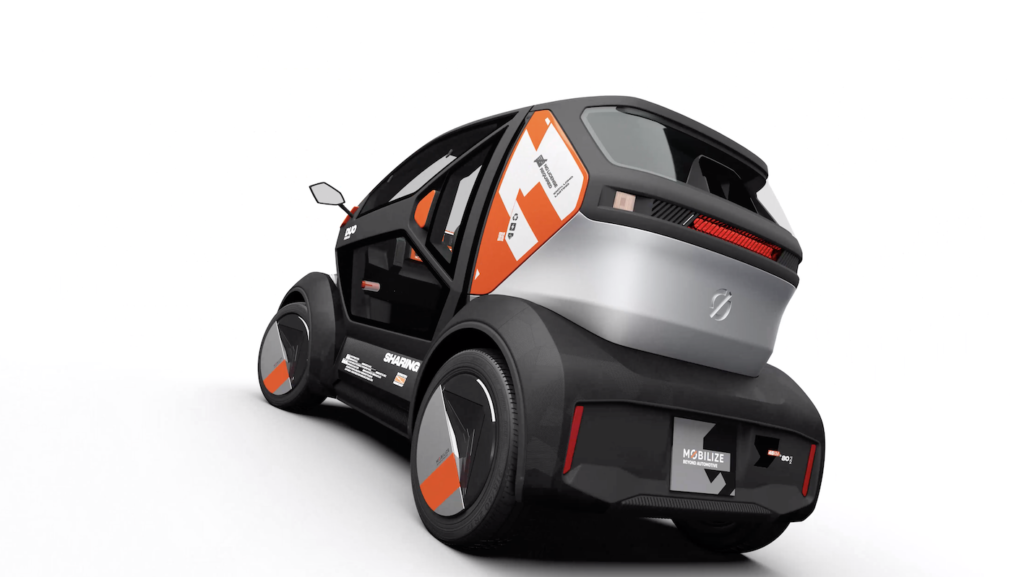
In terms of design, it is the small team led by Patrick Lecharpy, Mobilize design director, and Éric Diemert, Mobilize design project director, who have managed the design of this little cube, playing with two triangles on the side and a face that is less disturbing than that of the Ami. The body is not painted but will have customisation stickers on no less than six exterior areas.

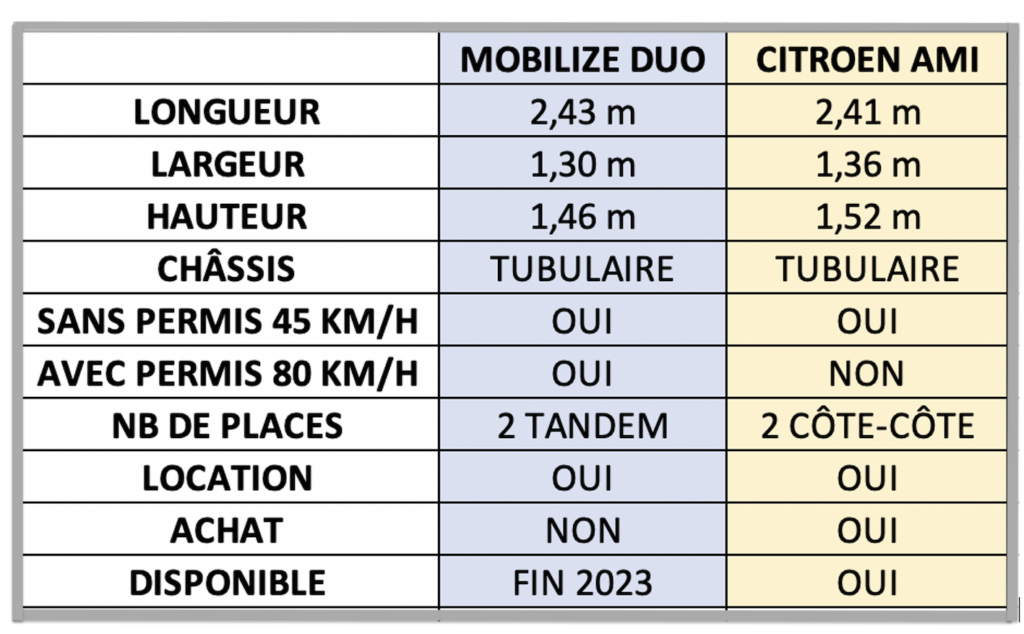
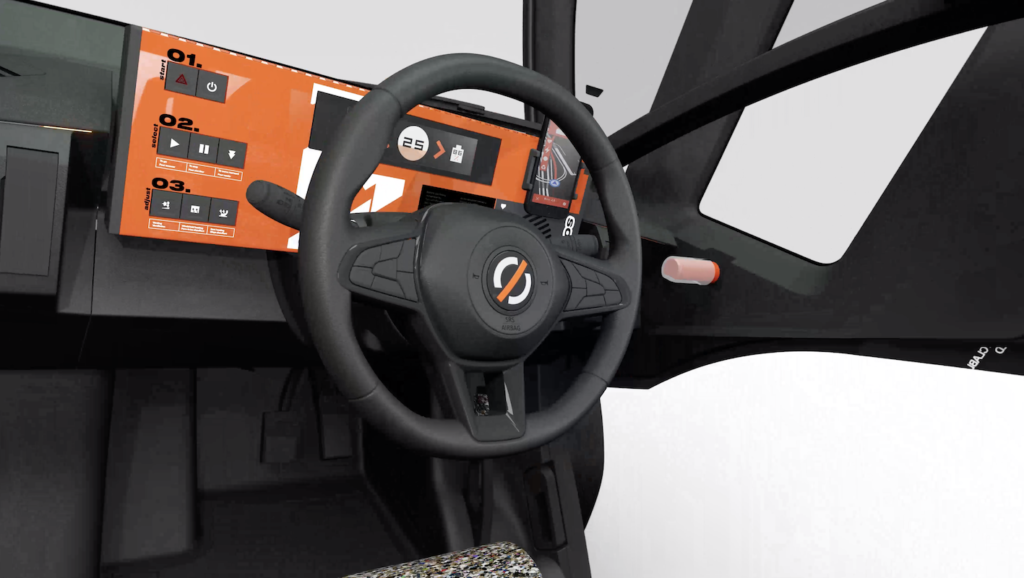
“The design of our vehicles and services carries the DNA of the Mobilize brand. We are inspired by urban codes to design mobility objects that are outside the traditional automotive codes. In the future, people will choose Mobilize for the experience it offers: sustainable and connected mobility, but also responsible, accessible, fun, practical, robust and easy to use,” explains Patrick Lecharpy.
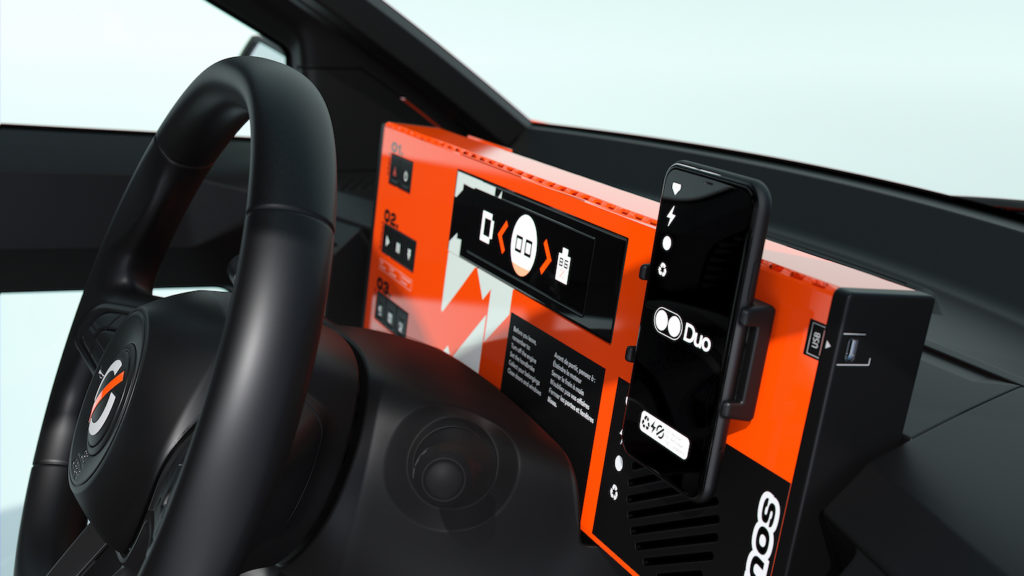
As for the interior, it is inspired – according to the manufacturer – “by the world of video games and gaming, with a nod to the 1980s and 1990s. The dashboard is reminiscent of one of the portable hi-fi systems emblematic of hip hop culture.” Design and the search for sobriety were at the heart of the development, with the objective of using more than 50% recycled materials in its manufacture, and 95% recyclability of the vehicle at the end of its life. Finally, we should mention one of the advantages of this small vehicle: a specific layout for people with reduced mobility (PRM) is provided. DUO can accommodate a folding wheelchair and has a steering wheel control kit.

The utility version of DUO above is called the Bento. It has only one seat, but has a large rear box with an optimal layout that provides a useful volume of almost 700 litres.
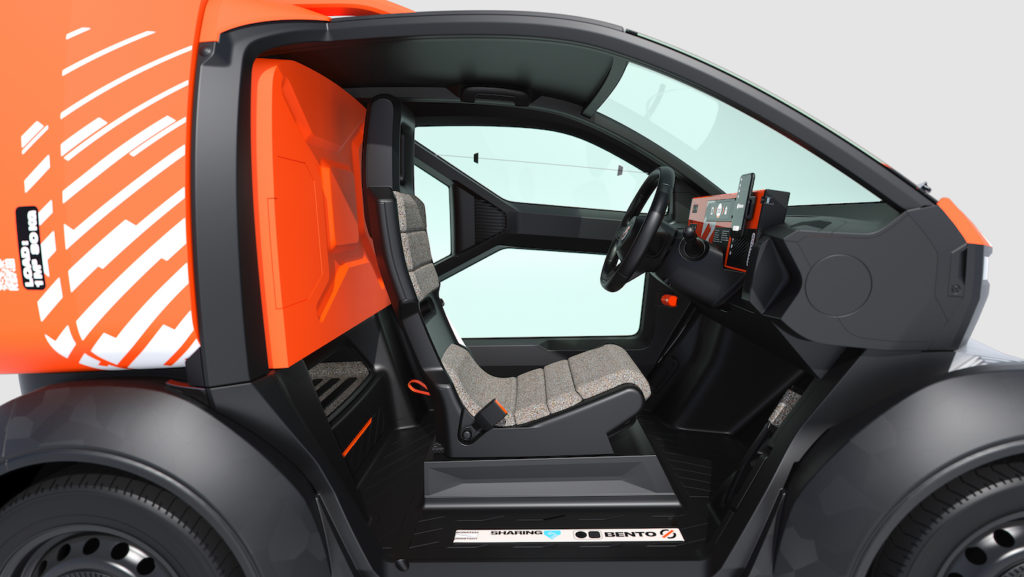
* The Mobilize brand is taking its place in the Renault group alongside the Renault, Dacia and Alpine brands. Its vocation is to account for 20% of the group’s turnover by 2030. Mobilize is not a car brand like its three sisters, its vocation being to go beyond the traditional business in the fields of new mobility, services and battery life cycle management. It also manages credits, charging card subscriptions for electric vehicles and the implementation of ‘Mobilize fast charge’.
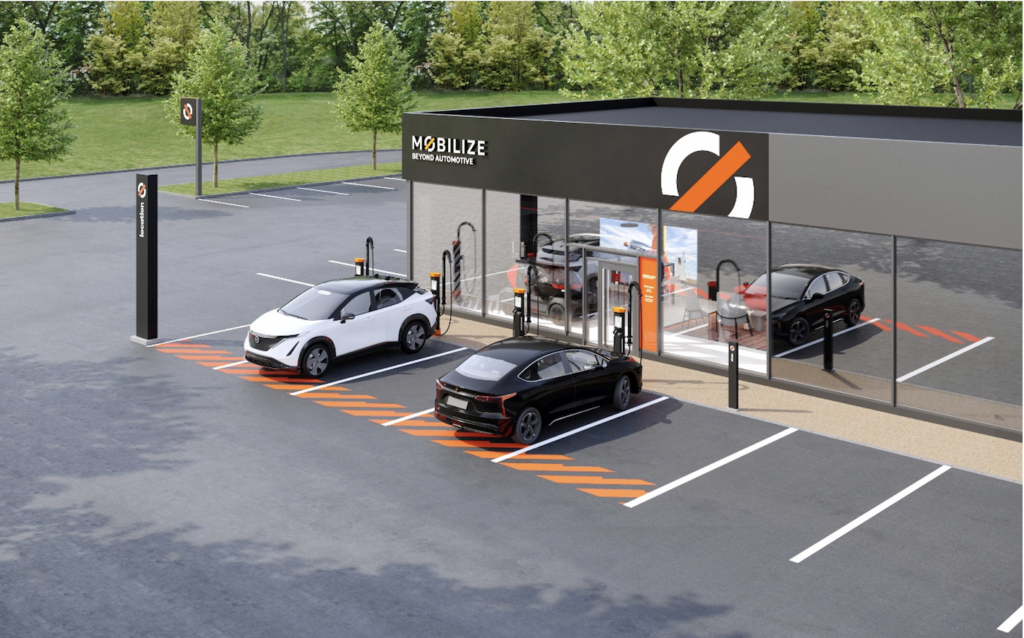
This last project consists of deploying an ultra-fast charging network with stations mostly integrated into dealerships. 200 are planned in Europe, including 90 in France to begin with. The idea is to offer a station every 150 km. The network will be complete by 2024 and each station will have six charging points for all vehicles, not just Renault. While charging, motorists will have access to a relaxation and service area, accessible 24/7.
VISIT OUR E-Commerce SITE AND DISCOVER OUR BOOKS : https://lignesautoeditions.fr
